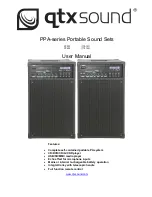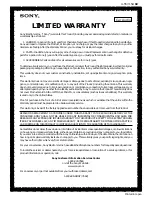
Line Group Programming (For ISDN–PRI Service)
When you provide ISDN–PRI service to system stations through a T1/PRI connection to the central office (CO),
you should do so through line group access rather than individual line connections. Remember, one T1/PRI
connection to the system yields 23 channels for communications to and from the stations (24 channels for
DXPT1–NFAS boards). While these channels correspond to line ports within the system, line designations such
as Line 1, Line 2 and so forth are meaningless for the T1 board’s CO connection designation. When the T1/PRI
board is called upon to pass an incoming or outgoing call between a station and the CO, it can do so through any
of the available channels. Having the system choose the channel is the most efficient method for call completion.
To best effect this, program the line ports that correspond to the 23 voice channels (plus 24 voice channels for
each DXPT1–NFAS board controlled by the D channel) into one line group, and assign that line group to the
stations that are to have ISDN–PRI service.
During operation, the system searches for an idle line in the line group in the same order that you program them
using this procedure.
Station Programming
In addition to the many other features that you can assign to a station, there are several features that are specific to
ISDN–PRI service.
Signal Type
The Signal Type feature selects the information transfer capability that the system requests during call setup for a
specific station port. The signal types that you can select include the following items:
Speech—digitized speech only–allows analog transmission, echo cancellation, and time-assigned
speech interpolation, (suitable for speech only)
3.1 Khz Audio—3.1 Khz digitized audio–allows analog transmission but does not
allow speech processing (suitable for modems),
56 Kbps Digital—56 Kbps digital data rate adapted to 64 Kbps (future feature),
Restricted Digital—64 Kbps digital data that is restricted so that there is no 8-bit zero
pattern allowed in any time slot (future feature),
Unrestricted Digital—64 Kbps digital data with no restriction on bit pattern (future feature).
Outbound Calling Number ID
The Outbound Calling Number ID feature allows you to choose the caller ID number that will identify the calling
station to a distant party. Usually you should set this feature if you specify station level identification as the
Calling Number ID Mode in Board Configuration Programming unless you want the default number to go out
instead (for example, for a shared telephone in a common area).
IMI89–255
Installing And Programming The DXPRI Card
30 – Programming The System For ISDN–PRI Application
Содержание DXP Plus Series
Страница 1: ...Digital Communications System R ...
Страница 363: ...Automatic Call Distributor Technical Manual R QuickQ DXP ...
Страница 424: ...Automatic Call Distributor System Manager s Guide R QuickQ DXP ...
Страница 500: ...Wrap up Time 1 6 Wrapping Up A Call 4 3 Z Zoom Box A 2 GCA70 271 Index I 3 ...
Страница 628: ...Interconnecting The VMI X Installing And Programming For ExecuMail IMI89 206 Installing And Programming For ExecuMail 5 ...
Страница 677: ...Connecting The Equipment Installing And Programming The OPX X IMI89 209 Installing The OPX X 7 ...
Страница 728: ...DP I I I I and FX Series Digital Communications Systems Understanding The Visual Man Machine Interface COMDlA ...
Страница 1112: ...9 08 8 90 1 13 4 78 3 94 UNIS029 TAB003 PLS page 6 GCA40 130 DXP Plus General Description 11B Telephone Features ...
















































